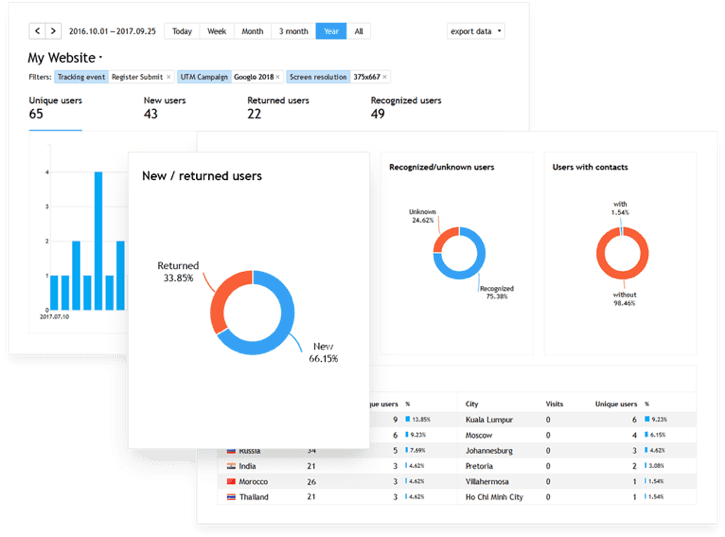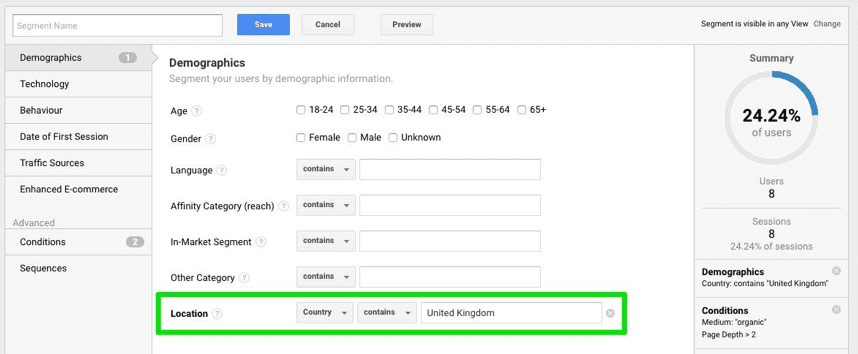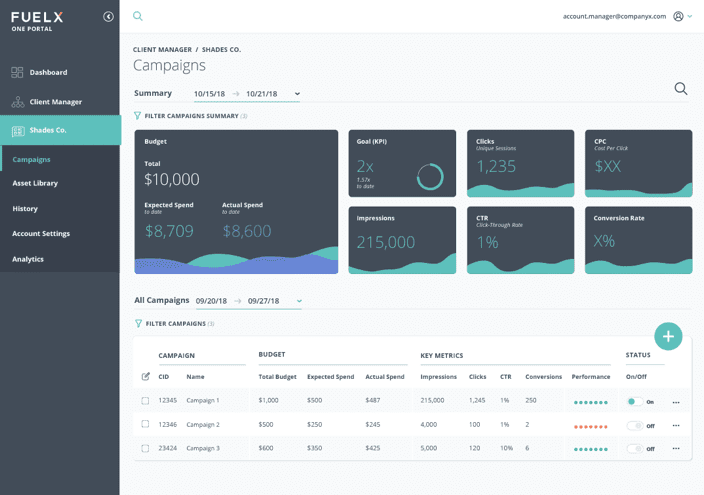When an advertisement is specially curated for a specific audience segment based on their behaviors or needs, it is going to be more effective and incur a higher conversion rate
Just about every business is looking for better ways to connect with their customers. Customer engagement is the key to conversions and loyalty. According to one report by Super Office, businesses with higher engagement rates had an average retention rate of 89%.
One of the best ways to capture your customer’s attention and build engagement is by connecting them with the content that matches their preferences. This is why targeted marketing campaigns work so well. When an advertisement is specially curated for a specific audience segment based on their behaviors or needs, it is going to be more effective and incur a higher conversion rate.
Download our Free Resource – Google Analytics Fast Start - 10 mistakes to avoid
This guide in the Smart Insights ‘Fast Start’ series gives you a checklist of issues to review to improve your implementation.
Access the
The only way to target audiences is by applying data in the proper way so that customers are viewing content that is personalized to them. Unfortunately, 70% of marketing teams report they do not use behavioral data to target their customers. Often, this is because they simply do not know how to collect the necessary data or apply it.
Gathering and utilizing consumer data does not have to be a complicated process. In fact, one of the best data sources that businesses can use for effective targeting comes from website traffic analytics.
Let’s discuss some ways that all brands can leverage this information for successful and hyper-targeted marketing.
Utilize a specialized analytics resource
Google Analytics is often the primary source of website traffic data that businesses rely on. While Google Analytics is certainly a good starting point, you are going to gain much better and deeper insights from tools that offer more features and better processing systems.
Google Analytics provides a good snapshot of the general areas where website traffic is arriving from, in terms of geographical location as well as the online links that drove them to a website.
However, to get a 360-degree view of your online audience, you should be using specialized analytical programs, such as Finteza. This program offers real-time data through interactive reports that measure multiple metrics as well as background information on each customer. Through specially coded links, you can track specific customers and key behavioral data, such as how many times they have visited your website, which link led them there, and which products they have viewed.
Information like this is much more useful for personalized advertising campaigns than the generalized data that Google Analytics offers. It can help your marketing team build a more thorough picture of your audience for more targeted content strategies.
Get detailed with segmentation and sequences
Another key ingredient for a successful targeted marketing campaign is proper audience segmentation. Just because a group of your customers falls into the same age range, location or income level does not mean that they should all be targeted with the same messages. Segmentation needs to go deeper to find the niche groups that can be hyper-targeted in an effective way.
Data from Google Analytics, or another analytical tool, will need to be utilized here to create audience profiles based on behavioral and demographic data. It is best to start with generalized segments and work your way down to more and more specific sequences.
Let’s say for example that you sell pool toys through an online store. You may want to start by segmenting your audience based on their location. Customers in warmer locations or nearby beaches would likely have a higher interest than customers in colder climates.
From there, you may want to narrow down even further to adults in their mid-twenties to early forties. These people are most likely to have children that would be interested in the toys. Additionally, you can segment again based on variable conditions. This might include whether or not they follow your brand on social media, how many times they have visited your website, or whether they prefer to shop on a mobile device.
By setting these criteria conditions for ad targeting, your marketing efforts can be highly personalized to an individual based on their actions. This is what leads to higher click-through rates (CTRs) and conversions.
Know exactly which metrics to track during test periods
Generally, when we think of a successful marketing campaign, we equate it to higher sales. However, if conversion rates do not grow right away, it is not necessarily an indication of failure. As you start to hyper-target audience segments, be sure that you know which metrics are markers of campaign success.
While conversions may not necessarily grow at first, other areas of change could signal success, such as CTRs, time spent on webpages, social followings, international traffic growth, and so on. It is helpful here to use a KPI tracking system that monitors the most important metrics and tracks changes.
Systems like FuelX are designed specifically for targeted advertising and provide deeper performance analysis on individual campaigns, rather than a generalized overview. This can help you understand how segments are reacting and where changes need to be made to improve results.
Target-based marketing is going to be a process of trial and error. You won’t nail your campaigns on the first go (or probably the second or third). The only way to know the impact that your efforts are making is by tracking the results. You will need to utilize a system that helps you pinpoint the metrics that are changing.
Conclusion
Customers want to feel special. They expect brands to cater to their needs and desires.
One of the best ways that businesses can do this from the start is through targeted marketing – but only if they are using data to fuel their campaigns. By understanding how to properly analyze and apply traffic behavioral data, companies can optimize their approaches and target customer segments more effectively.
Manish Dudharejia is the President and Founder of E2M Solutions Inc, a San Diego Based Digital Agency that specializes in Website Design & Development and eCommerce SEO. With over 10 years of experience in the Technology and Digital Marketing industry, Manish is passionate about helping online businesses to take their branding to the next level.









